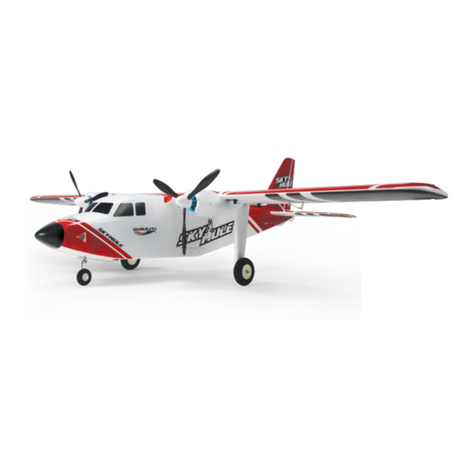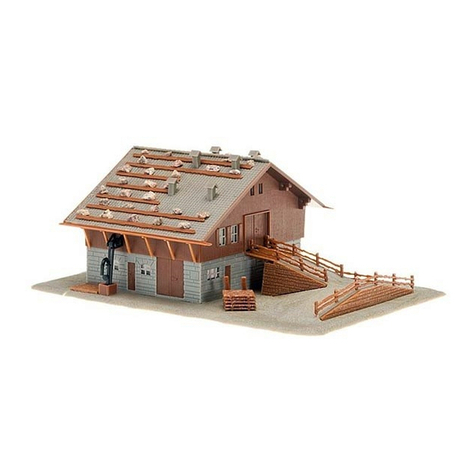High Tech 3003 User manual

page 1
Instructions
Art-Nr:3003 Red backlights 4-axle up to 16 volt
1. These parts are not suitable for small children. There is a
danger of swallowing.
2. The product can be seen in figure 1. These instructions are
part of the product. Please retain them well.
3. The product is suited for direct and alternating current from 6 –
16 volt. The current consumption depends on the brightness of
the LED, usually a couple of milliampere.
4. The metal weight inside the wagon has been removed, the
built-in electronics weigh approximately the same, so the
weight of the model basically has not changed.
5. The installed backlights are ready to use, so you just can put
the car on the tracks and start running it. The lights will start
working as soon as they are connected to a current of the
above mentioned strength, no extra charging time is
necessary. The built-in electronics are able to bridge voltage
gaps up to a few seconds that are normal to occur when
working with model trains and due to the light weight of the
car. This has the effect that the backlights always shine with a
continous intensity when the car is moving.
6. Under normal circumstances the backlights are also working when the wagon is standing, e.g. if in a
digital system the tracks are always provided with current or when using our controller for analog
systems. But this cannot be guaranteed, since it is due to physical reasons that the current input is
not continous, but always interrupted for short intervals. If the wagon comes to a halt where the
contact of the current to the current collectors is interrupted, it is logical that the lights turn off after a
short afterglow. But as soon as the car starts to move again, the current collectors have contact to the
current again and the LEDs will be shining again continously as described above.
7. The LEDs are affixed underneath the upper platform of the wagon very firmly. Nevertheless it is
advisable to avoid mechanical impact, contact with screwdrivers or other tools, or getting stuck with
your fingernails. If the LED is broken off, this very often also damages the small wires.
8. Unlike the wheels moving along without current, these wheels are picking up a lot of dirt. We know
this problem from the locomotives. For working properly, they need to be cleaned from time to time.
For doing this, dismantle the wheels carefully using some tweezers. Avoid contact with the current
collectors by picking them up on the side opposite to the current collectors.
9. Never try to dismantle the bogie. There is a thin wire attached firmly to the car chassis and the bogie,
which will break in case of dismantling. For cleaning, always only dismantle the axles. As described
under point 8, do not damage the current collector.
10. Ultrasonic treatment and using a damp cloth are the best methods to clean the wheels, especially the
contact surfaces and the axle. According to our experience it is best to use ultrasonic treatment
and/or polish everything with a damp cloth. The contact surfaces should not be matt afterwards, but
shining like the ones of a new wheel. The cleaning process does not influence the abrasion of the
nickel layer. The abrasion of the nickel layer usually has a different reason, e.g. the different speed of
the wheels on each side when going through curves. But the nickel layer can also be damaged
unnecessarily when using a whire brush or fiber glass pen, so we strongly advise to use the method
described above for cleaning your wheels.
11. The best liquids for cleaning the wheels are benzine, alcohol, purified alcohol, surgical spirit, or simply
spirit, all of them mild cleaning liquids for metal. Just soak a cloth and wipe off the dirt. The wheels
should not be soaked and remain in these or other detergents for any length of time. Also do not use
any solvents or thinners that are used when working with paint. These are likely to damage the plastic
foam insulation on one side of the wheel and make it soft. As a consequence, the wheel starts to
flatter.
page 2
figure 2: A closer look at the backlights
figure 1: Red backlights in a motorvehicle transport car

page 2
Instructions
Art-Nr: 3003 Red backlights 4-axle up to 16 volt
10. For reassembling the wheels, use the tweezers again. The
model has to lie securely and backwards on the
locomotive repairing fixture. Put the axle on the spot where
it is usually held by the clamp, figure 3. Watch for the
correct polarity! Figure 6 and 7. Now use your tweezers to
bend open the clamp at the side away from the current
collector by pressure on the axle and push in the wheels,
figure 4. Finished – all done, figure 5.
11. For running your trains properly, the right polarity is very
important. Axles built in the wrong way cause short circuits
with high currents that can destroy the fine current
collector springs. An axle of a 4-axle wagon is built in
correctly if in one bogie both axles are built in the same
way. In this case you can see the uninsulated side of the
wheel, so the pure metal wheel, at the upper edge, figure 7.
In the other bogie the axles then have to be built in exactly
the opposite way. Remember this well, it is very important
for running your trains properly and avoiding major
damages.
12. The current collectors are our own design and patent
protected under German law. A compromise had to be
found between the elasticity of the metal and the contact
pressure of the spring. Of course a high contact pressure
guarantees a good current collection. This is no problem
with powered locomotives, the engine easily surmounts
this frictional resistance. With wagons pulled by a
locomotive things are a bit more difficult. Concerning our
current collector, we have given preference to the elasticity
of the metal, and so to a low contact pressure. The very
thin and flexible material has the ability to abut with a
strong bending, but with low pressure, evenly and securely
on the axle. This is why the spring is strongly bent
forward, see figure 8. It can happen that this bend
disappears in the course of time. So always check the
spring when cleaning the wheels and if necessary bend
the spring again as shown in figure 8. Don’t be afraid, the
material is suitable for this and due to the low contact
pressure the wagon, in spite of its light weight, won’t be
lifted by the spring.
13. High Tech Modellbahnen manufactures its products with
the greatest possible care. We issue a guarantee and
warranty according to legal regulation. Should you find any
new product you just bought defective, please contact your
local dealer.
14. If one of our products has been damaged or breaks,
please contact your local dealer as well. He often might be
able to save it, while own attemps to repair it might lead to
a total economic loss.
Now enjoy your new car with backlights.
High Tech Modellbahnen
97456 Hambach
www.z-hightech.de
figure 6: Left bogie: both axles with the isolated sides
facing upwards
figure 7: Right bogie: both axles with the uninsulated
side facing upwards.
Very important! Very important!
figure 8: The correct position of the current collector
springs without the axle
figure 3: The axle ready to be built in, lying on top of
the clamp
figure 4:
ushing the axle into the clamp with the help
of some tweezers.
figure 5: The axle has been pushed underneath the
clamp holding it in ist place.
Popular Toy manuals by other brands
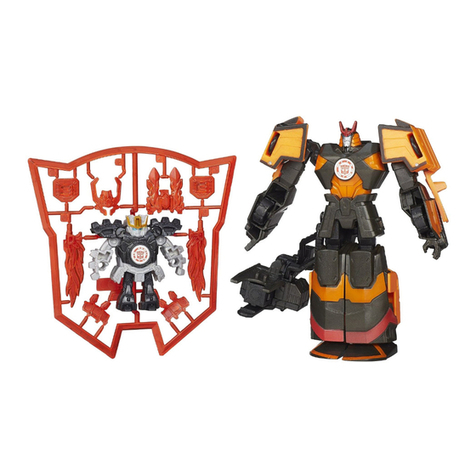
Hasbro
Hasbro Transformers Robots in Disguise Mini-Con Deployers Autobot... Quick start quide

Faller
Faller 120234 manual
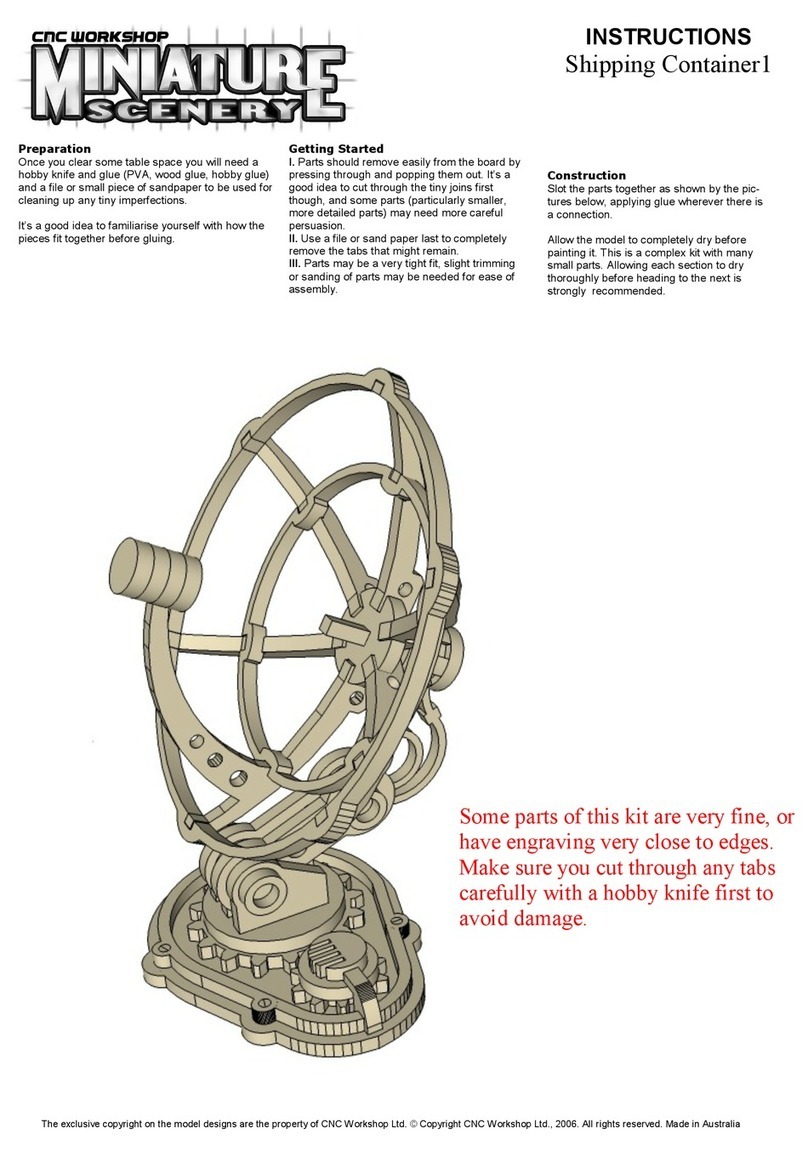
CNC Workshop
CNC Workshop MINIATURE SCENERY Shipping Container1 instructions
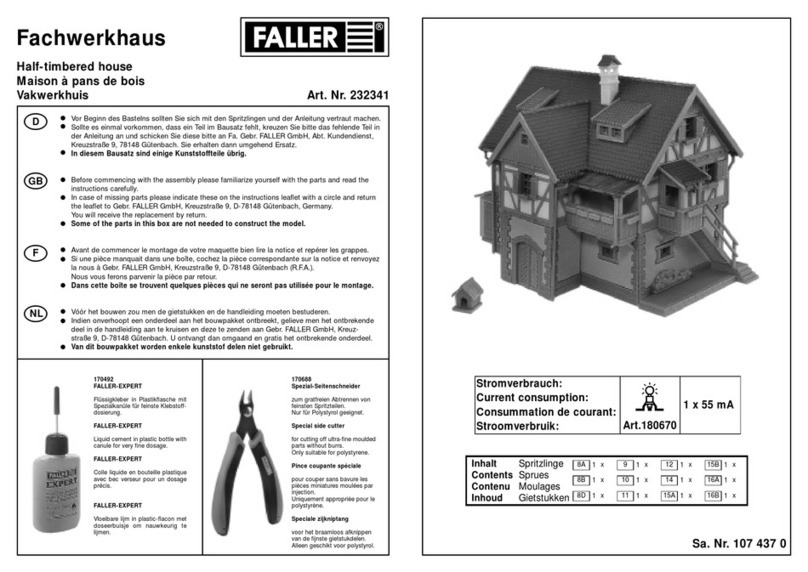
Faller
Faller HALF-TIMBERED HOUSE instructions
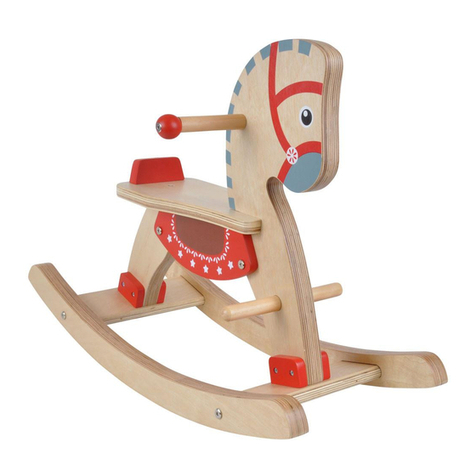
Bandits and Angels
Bandits and Angels YF2282 Assembly instructions
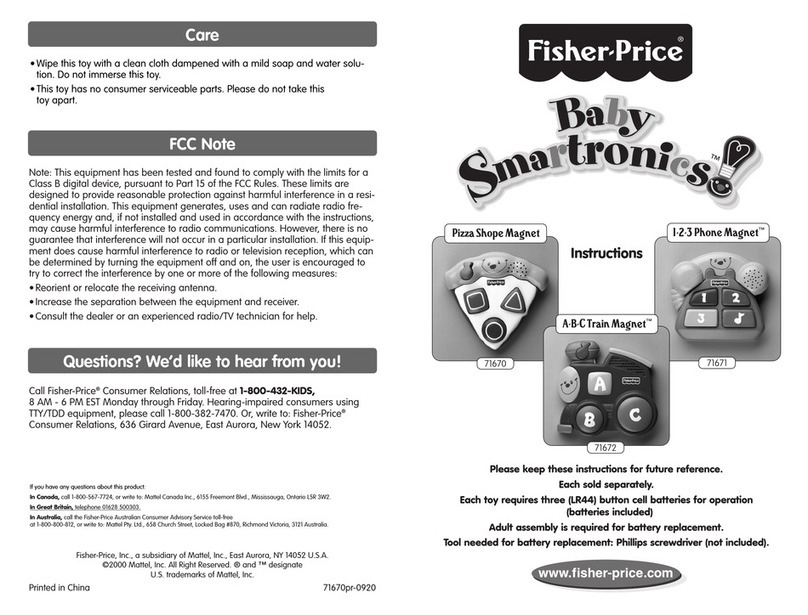
Fisher-Price
Fisher-Price Baby Smartronics instructions

Dynam
Dynam P-47D thunderbolt instruction manual
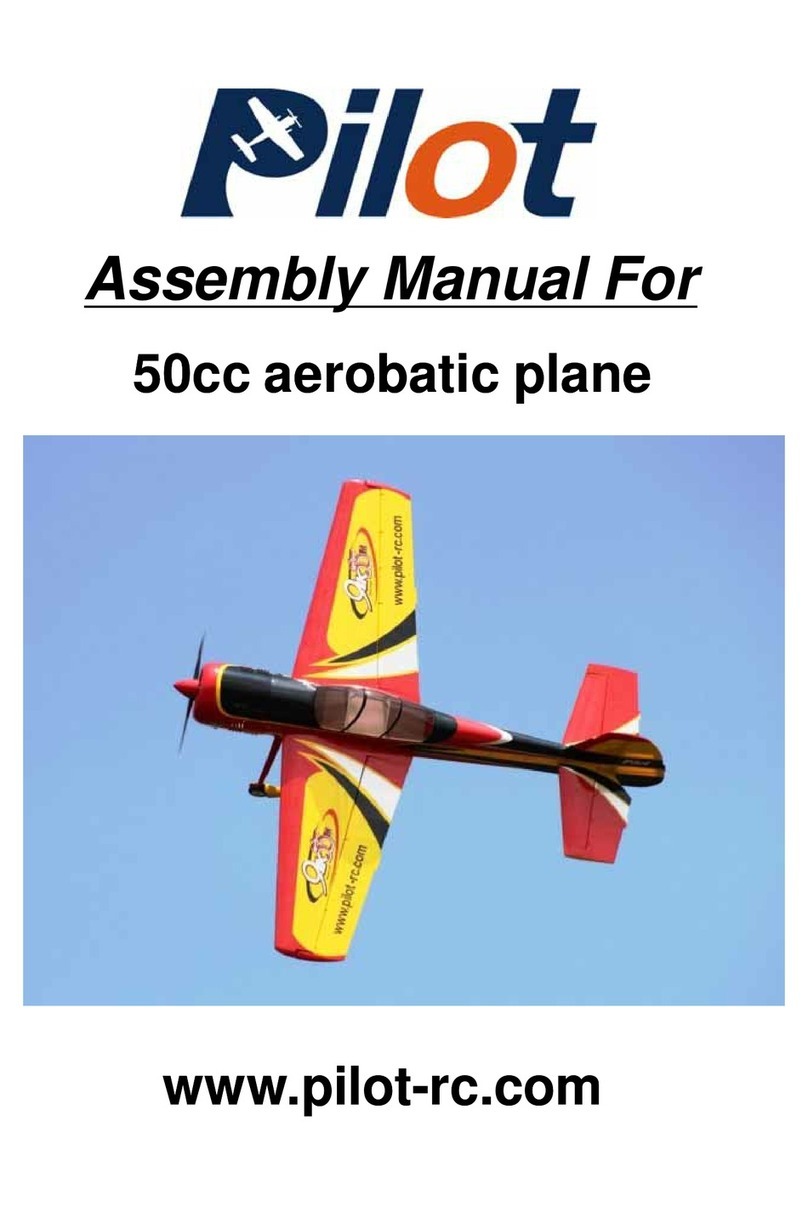
Pilot Communications
Pilot Communications 50CC Assembly manual
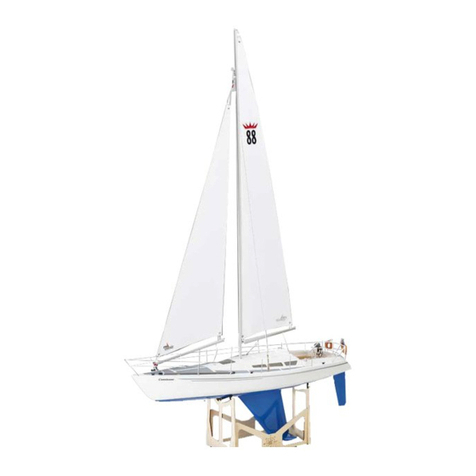
Krick
Krick COMTESSE Building Instruction

REVELL
REVELL German Heavy Cruiser Blucher Assembly manual
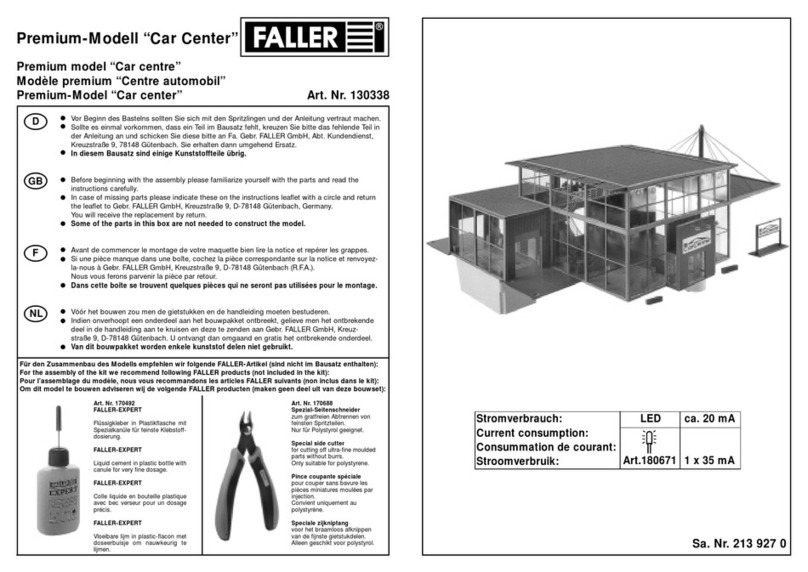
Faller
Faller Car Center Assembly instructions
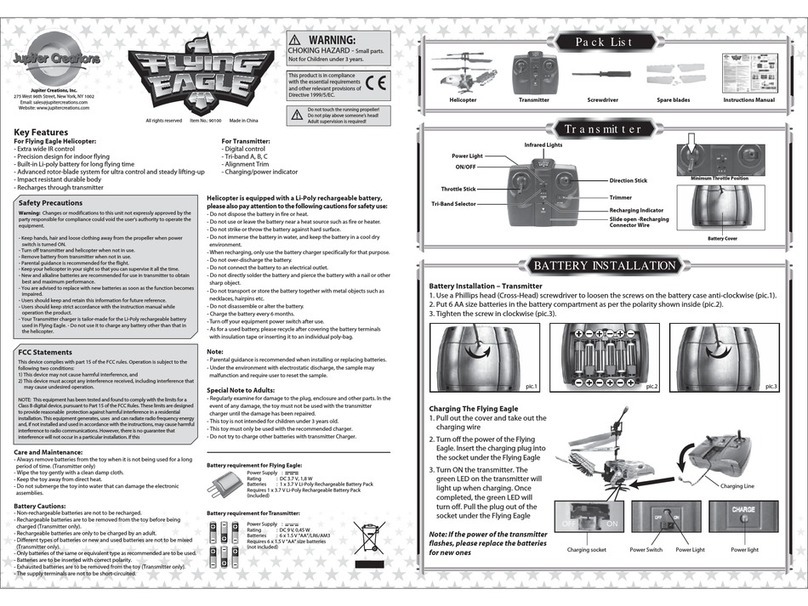
Jupiter Creations
Jupiter Creations Flying Eagle 90100 instruction manual


